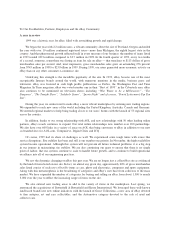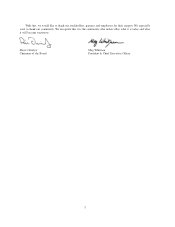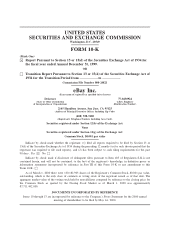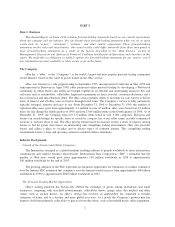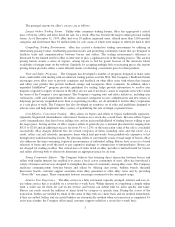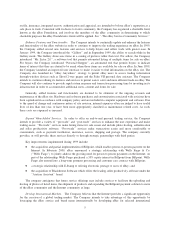eBay 1999 Annual Report Download - page 7
Download and view the complete annual report
Please find page 7 of the 1999 eBay annual report below. You can navigate through the pages in the report by either clicking on the pages listed below, or by using the keyword search tool below to find specific information within the annual report.services, and other items. With the shift to a broader product offering, the Company’s competition has also
broadened, and now includes distributors, liquidators, retailers, import/export companies, catalog/mail order
companies, and virtually all online and offline commerce participants (consumer-to-consumer, business-to-
consumer, and business-to-business).
Many of these traditional forums are inefficient because:
●their fragmented, regional nature makes it difficult and expensive for buyers and sellers to meet,
exchange information and complete transactions;
●they may offer a limited variety or breadth of goods;
●they often have high transaction costs; and
●they are information inefficient, as buyers and sellers lack a reliable and convenient means of setting
prices for sales or purchases.
The Internet offers the first opportunity to create a compelling global marketplace that overcomes the
inefficiencies associated with traditional trading among individuals and small businesses. An Internet-based,
centralized trading place offers the following benefits:
●facilitates buyers and sellers meeting, listing items for sale, exchanging information, interacting with
each other and, ultimately, consummating transactions;
●allows buyers and sellers to trade directly, bypassing traditional intermediaries and lowering costs for
both parties;
●is global in reach, offering buyers a significantly broader selection of goods to purchase and providing
sellers the opportunity to sell their goods efficiently to a broader base of buyers;
●offers significant convenience, allowing trading at all hours and providing continuously updated
information; and
●fosters a sense of community through direct buyer and seller communication, thereby enabling
interaction between individuals with mutual interests.
In addition, the community orientation, facilitation of direct buyer to seller communication and efficient
access to information on a buyer’s or seller’s trading history can help alleviate the risks of trading. As a result, a
significant market opportunity exists for an Internet-based, centralized trading environment that applies the
unique attributes of the Internet to facilitate personal trading.
The eBay Solution
eBay pioneered personal trading of a wide range of goods over the Internet using an efficient and
entertaining auction pricing format and has grown into the largest and most popular personal trading platform on
the Internet. The core eBay service permits sellers to list items for sale, buyers to bid for and purchase items of
interest and all eBay users to browse through listed items from any place in the world at any time. eBay offers
buyers a large selection of new and used items that can be difficult and costly to find through traditional means.
eBay also enables sellers to reach a larger number of buyers more cost-effectively than traditional trading forums.
The eBay service was originally introduced in September 1995 to create an efficient forum for individuals
to trade with one another. Since its beginning as a grassroots online trading community, eBay has primarily
attracted buyers and sellers through word of mouth and by providing buyers and sellers a place to socialize,
discuss topics of common interest and ultimately to trade goods with one another. The number of categories
under which eBay users list goods for sale has grown from 10, when eBay was first introduced, to more than
3,000 as of December 31, 1999. The main categories on eBay currently include automobiles, antiques & art,
books, movies, music, coins & stamps, collectibles, computers, dolls, dollhouses, jewelry, photo & electronics,
pottery & glass, sports, toys, miscellaneous items (‘‘everything else’’), and premium arts and collectibles.
2


